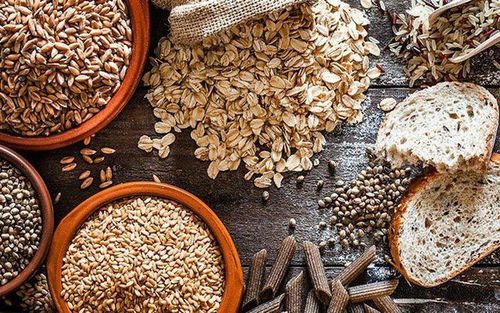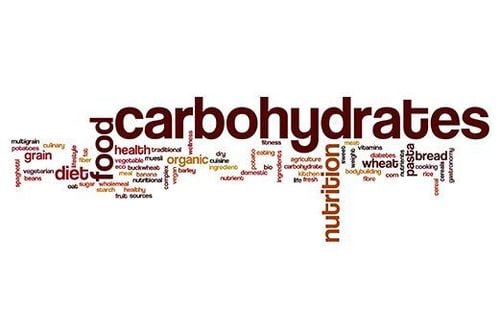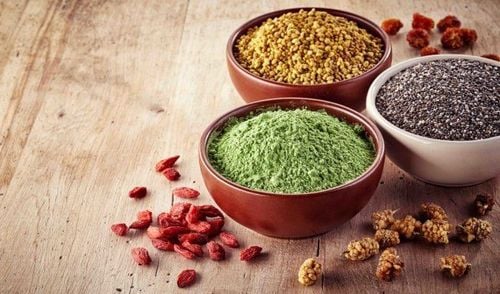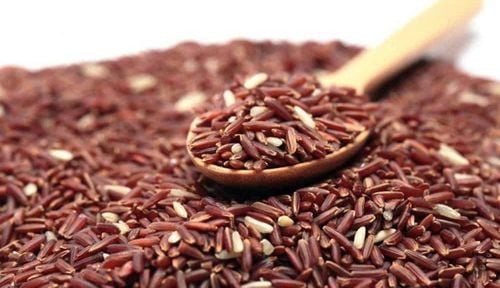This is an automatically translated article.
All grains are good sources of complex carbohydrates and many important vitamins and minerals. But whole grains are the healthiest grains to be part of a healthy diet. So how to eat whole grains for good health?1. How to eat whole grains and is it good?
Whole grains are grains that are whole or ground, but retain all parts of the grain (bran layer, germ, and endosperm). Compared to other grains, whole grains provide more fiber, which helps you feel full and maintain a healthy body weight. In addition, whole grains are high in important nutrients such as B vitamins, iron, folate, selenium, potassium and magnesium. Eating ready-to-eat or unprocessed whole grains reduces the risk of heart disease, diabetes, some cancers, and many other health problems.Whole grains can be single foods such as brown rice, popcorn, or as an ingredient in products (whole wheat flour in bread).
2. Whole grains
Make sure you eat at least 50% of the grains in your diet as whole grains. Whole grains include: Rice, bread, flour, pasta, brown rice, buckwheat, barley, millet, popcorn, biscuits,...Distinguishing a product that contains grains Whole grains or refined grains isn't easy, especially with bread. A brown bread may not be made from whole wheat. Instead, the brown color of the cake may be due to the manufacturer's use of food coloring. If you're not sure if a product has whole grains, check the product label or the nutrition facts panel.
Users also need to be aware, if all the grains you eat are whole grains, then you may need to supplement with folic acid for your body. Most refined grains are fortified with folic acid, and whole grains are not. You can buy and use folic acid-fortified whole grains (instant cereals) or eat other folate-rich foods like fruits, vegetables, and legumes. Folic acid is especially important for women who are planning to become pregnant or are pregnant.

Gạo, gạo lứt, lúa mạch, hạt kê,... là một số loại ngũ cốc nguyên hạt
3. How to increase the amount of whole grains in your diet
You can follow the tips below to add whole grains to your meals and snacks:Enjoy your breakfast with whole grains like wheat, oatmeal . An analysis by the FDA (US Food and Drug Administration) shows that eating oatmeal for breakfast helps to reduce total cholesterol in the body. Eat whole grain bread. This is a snack for gym goers to build muscle and replenish glycogen stores. Add oatmeal or other whole grains to ingredients when making cakes. Make whole grain bread from whole wheat. Replace white rice with brown rice, barley,... Brown rice has more vitamins and fiber than white rice. Add rice or barley to soups, casseroles, etc. Barley is high in fiber and selenium, which helps prevent cell damage caused by free radicals. Add whole grains like cooked brown rice or whole-grain bread crumbs to your ground meat, poultry, and... Whole-grain breaded chicken breast, adding spicy marjoram is a delicious treat. and good for health. Eat pasta made from whole wheat, eat Japanese soba noodles (made from buckwheat). Eat corn because corn is gluten-free, packed with antioxidants and carotenoids (related to eye health). Increasing the amount of whole grains in your diet will help you provide more nutrients to your body, promote health, and make meals more attractive.
Regularly visit to get more useful information or if customers have questions, you can send questions Vinmec International General Hospital Website to receive in-depth advice.
Reference source: mayoclinic.org - mensjournal.com













